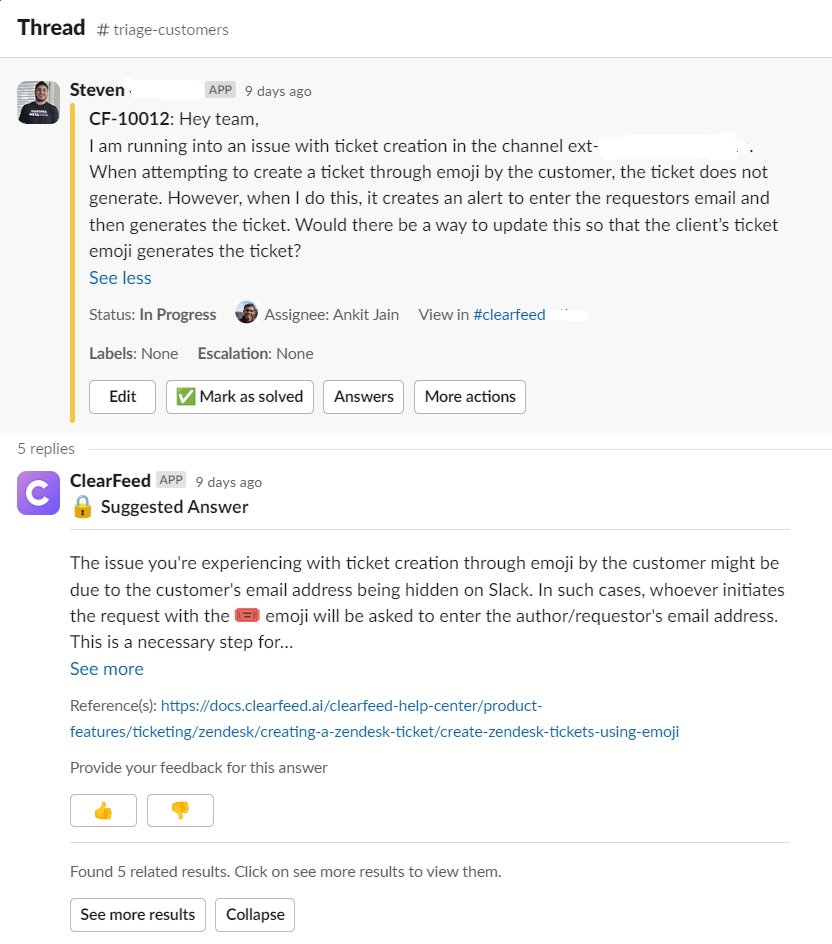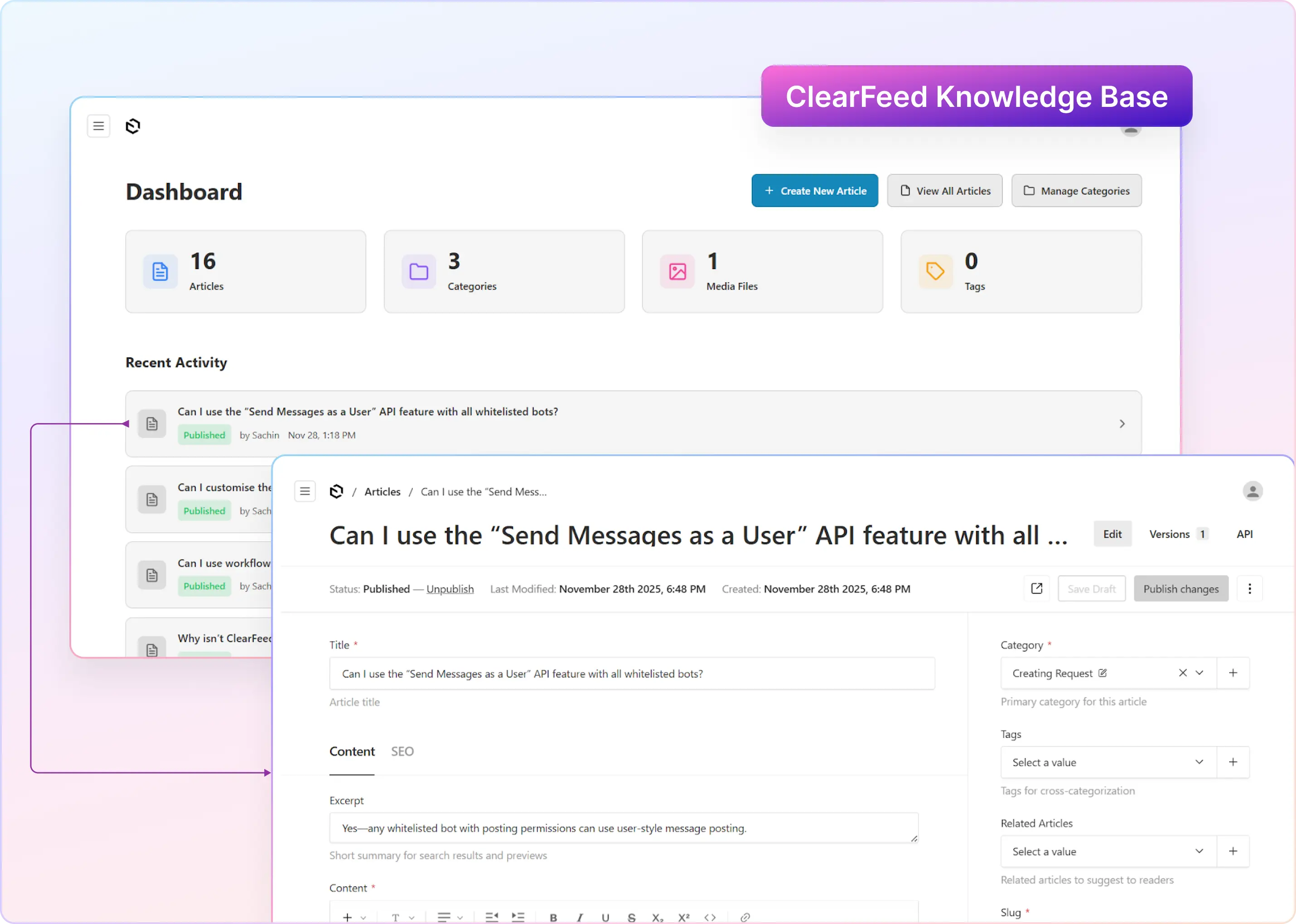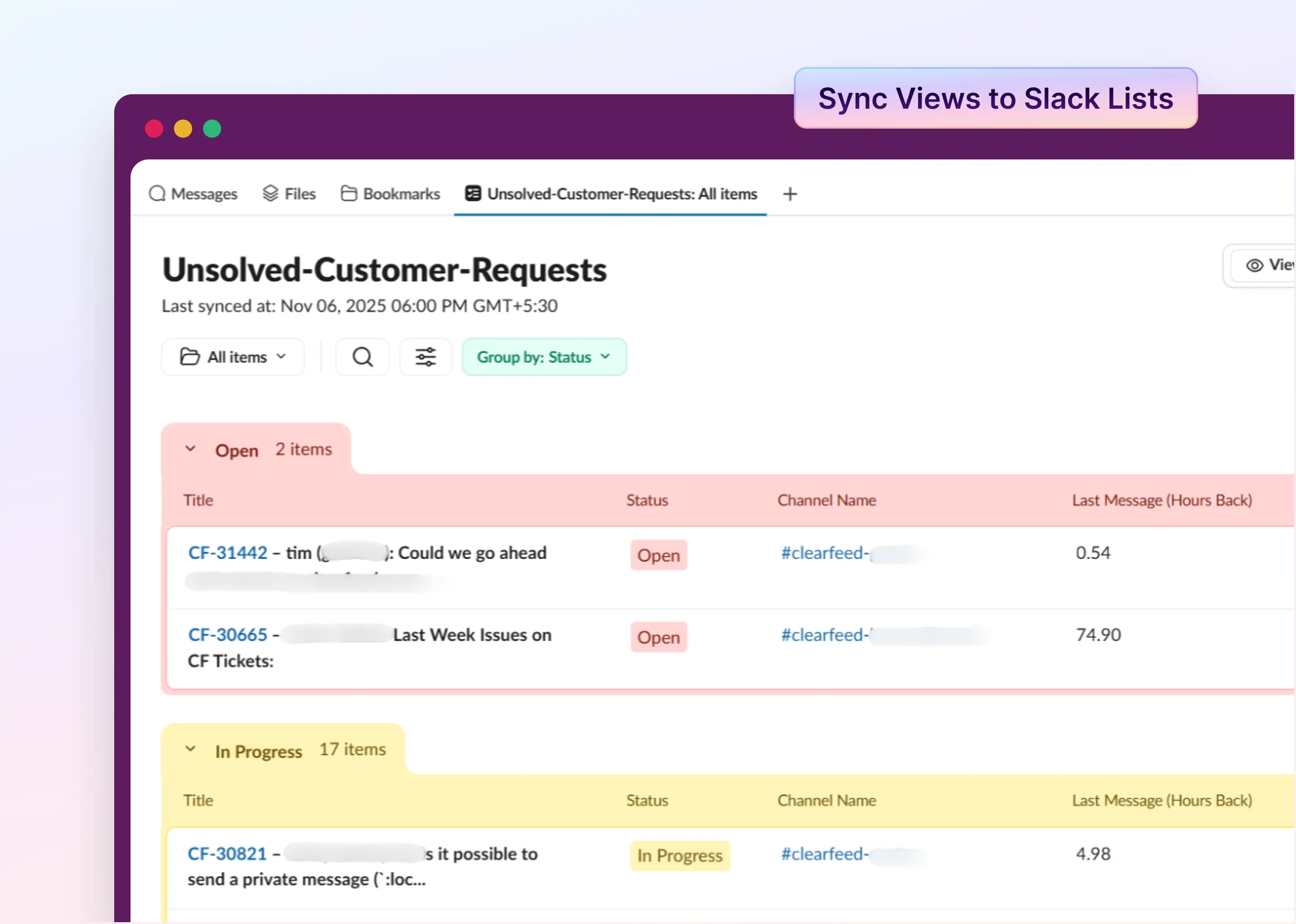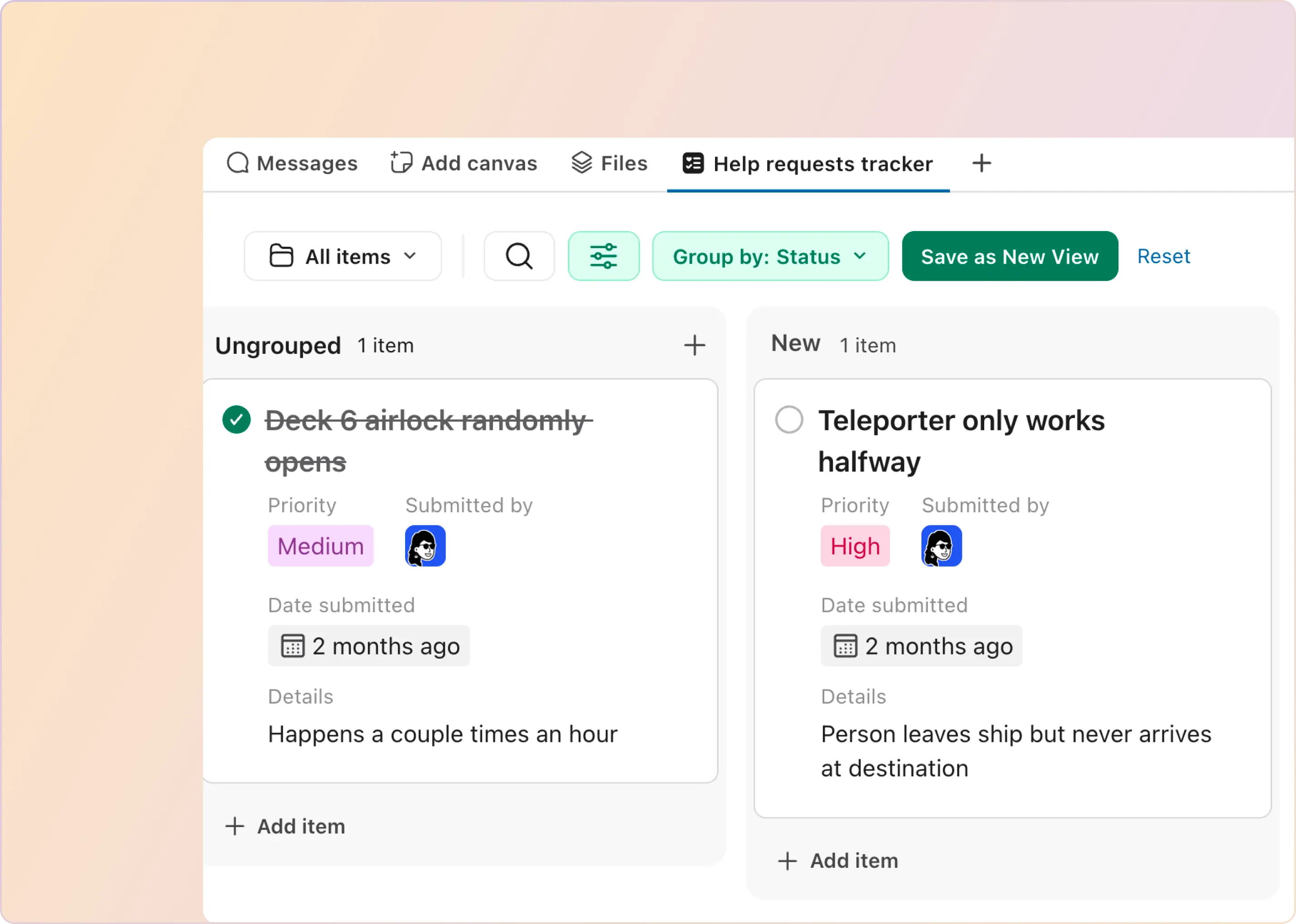Effective communication is crucial in today's workplaces, where it's important to stay connected and get things done. Slack is a tool that has changed the way we talk to each other with its simple design and useful features. However, managing a lot of messages, especially the repetitive ones, can waste valuable time and break our focus. That's where Slack Auto Response comes to the rescue—it helps make communication smoother and boosts productivity.
By automatically replying to common questions or setting up messages for when you're away, Slack auto response offers an easy way to keep communication quick and efficient. In this blog, we'll explain everything you need to know about Slack auto response, how to set it up, and how it can greatly improve efficiency at work.
What Is a Slack Auto Response (Automated Message)?
An auto-response (or a custom response) sends automated messages in Slack whenever certain triggers or keywords are detected. This feature enables support teams to maintain a continuous presence, quickly answer frequently asked questions, and provide instant acknowledgment to customers and employees at any time, even outside of business hours.
Why Is Auto Responder an Essential Tool for Support Teams?
Auto responses can significantly enhance support interaction in four important ways.
- Time-Saving and Enhanced Efficiency: Repetitive questions like “What’s the Wi-Fi password?” or “Who do I contact for IT support?” can eat into valuable time. Slack Auto Response automates answers to such queries, freeing up employees to focus on more critical tasks.
- More Responsive to Users: A quick automated response provides a better experience for users. When configured correctly, it provides them helpful information and guidance on places to look for more information.
- Sets Expectations during Non-Business Hours: If the Support team is not available immediately, auto-responding on when a human response can be expected sets expectations and improves user experience.
- Consistent Messaging: Predefined replies ensure clarity and consistency, reducing the chances of miscommunication. This is especially valuable in large organizations where uniform messaging is critical.
- Reduced Stress for Teams: Knowing that basic inquiries are handled automatically helps reduce stress and improve morale, particularly during high-demand periods.
How to Set Up Auto Reply and Automate Messages in Slack?
Here are three easy ways to set up automatic replies in Slack:
- With Slackbot: Choose words that will trigger automatic responses.
- Through Slack workflows in channels: Set conditions to send automated replies in a channel.
- With ClearFeed: Create automatic "Out of Office" replies or automated answers from documentation and knowledge-bases in Slack.
Another related technique in Slack is to set a personal availability status to signal availability. Let's take a look at each below.
A. How to Setup and Customize Automated Responses Using a Slackbot?
To setup automated responses using Slackbot, perform the following steps:
- Launch Slack, and locate your Slack workspace name at the top-left corner. Click on it to drop down the menu, then select 'Tools’ -> 'Customise workspace' as shown below:
- The above action will redirect you to your default web browser, opening the Slack Admin page.
- Find and click the 'Slackbot' tab on the Slack Admin page. Here, you will be able to start creating your auto responses.
- Find and select the 'Add New Response' button. This is where you can provide the content for your automated replies or messages.

- In the left panel, input the words or phrases you'd like Slackbot to recognize and respond to. You can program Slackbot to respond to multiple triggers by including multiple keywords or phrases separated by c

Now anytime someone asks this question in the Slack workspace - Slackbot will reply back with the configured answer. Here's an example of what this looks like in action:

Unfortunately, Slackbot automated responses apply to the entire workspace. That may make them unsuitable for team specific automated responses on specific channels. They are also not linked to any business hours or vacation schedules - so must be updated based on schedule repeatedly. Finally, Slackbot triggers only on exact matches of text - and that makes it a little outdated in this age of AI which can easily understand user intent and question without the mention of specific words.
B. How to Set Automated Responses Using Slack Workflows
To set automated responses using Slack Workflows, perform the following steps:
- From the Slack desktop application, open the "..." menu on the left pane and click on Automations and select New Workflow.

- One can create workflows that post a predefined reply to any message with an emoji, as shown below. This works in channels where emojis are used to signal tasks that need attention.

- Publishing the workflow will turn on the automatic response.
Unfortunately Slack workflows have some similar issues as Slackbot:
- Inability to trigger on every new message in a channel
- Aside from some pre-installed workflow actions - it is not possible to invoke external actions using webhooks (for example).
- Not aware of business schedules and office hours, so any OOO workflow has to be continously updated which makes it unusable.
- Not possible to target groups of channels.
C. How to Set Away Status in Slack?
If you are looking to simply show your team you are offline without sending an auto-reply message, you can set your status to "Away"
- Click your profile picture in the bottom left on the Slack desktop app.
- Set yourself as away
- Alternatively set a custom status using text and emojis (very helpful, for example, to signal you are away for lunch).
For sending actual messages when you are away, use the Auto Reply methods below. Slack availability and status settings are very useful then users directly message or tag you in Slack. They can easily see that you maybe away at this time. However it does not signal availability of service teams on Slack and also doesn't provide a useful automated response (when that is possible).
D. How to Set Automated Responses in Slack Using ClearFeed?
ClearFeed is a conversational support platform for Slack that helps support teams scale customer and employee support to hundreds of Slack channels and users. One of the key functionalities of such software is enabling automated responses. ClearFeed supports both out-of-office responses and automated answers based on FAQs and knowledge bases. Here's how:
1. How to Set Out-of-Office (OOO) and Vacation Auto-Reply in Slack
Once ClearFeed is installed in a Slack workspace, the following steps can be followed to set out-of-office responses in Slack:
- First, users can set business hours for their team from Business Schedules & SLA > Business Schedules, as shown below.

- Now, they can define automated response workflows on Collections of Slack channels (or Direct Messages) where support requests are posted. These responses can be enabled/disabled for different categories of customer requests with different delay timers, as shown below. ClearFeed's software automatically identifies new customer requests and combines related ones where appropriate.

Further details are available in our blog on automated OOO replies.
2. How to Set-up Automated Responses from Knowledge Bases in ClearFeed
Out of office messages are great - but wouldn't it be far better to automatically answer user questions from common company FAQs and knowledge bases? Chatbots are a fundamental expectation in this age - and ClearFeed makes this very easy:
- Users can add knowledge sources to ClearFeed. Currently, ClearFeed supports knowledge sources like public websites, Notion, Google Docs, Confluence, Sharepoint, KBs in Zendesk and Freshdesk, etc. An example is shown below:

- Once a knowledge source is configured, it can be configured to generate answers and search results for either a triage channel (where agents are reviewing support requests) or directly for customer-facing request channels. An example suggested answer in a Triage Channel is shown below:

Further details are available in our blog on GPT-powered answers. Support teams can review how many answers were posted, how many were successful in resolving issues and also continually make their documentation better using the DocAssist AI Agent.
How ClearFeed Addresses Challenges with Slack Auto Responses
As we have seen, while Slack provides a couple of different ways within Slack to post automated responses, these suffer from many drawbacks which make them difficult to use in practice. ClearFeed addresses these fundamental challenges and goes further by seamlessly bringing in your documentation and knowledge bases to respond to customer requests on Slack automatically:
- Easily group your channels into Collections.
- Define when to post auto-responses (on top level messages, replies, both or on Emoji events).
- Automatically understands the difference between Support Agents and employees/customers - and only auto-responds to the latter.
- Main business schedules easily and link automatic replies to the business schedule.
- Post automated responses crafted based on the user question from documentation and knowledge bases using the latest AI models - to automatically resolve user questions.
Finally - ClearFeed provides a full ticketing system and can also integrate with many other well known ones like Jira, Zendesk, Linear, ClickUp etc. For issues that are not resolved by automated responses - ClearFeed can automatically file tickets to keep track of customer and employee requests.
Getting Started with ClearFeed
ClearFeed provides a holistic solution to service teams looking to scale engagement and support on Slack channels. Some of the world's top technology companies use ClearFeed to improve customer and employee experiences and make support teams efficient. You can get started with ClearFeed by signing up for the service, reaching out to us at support@clearfeed.ai or booking a free demo with us to understand better our product and how we can help.
















